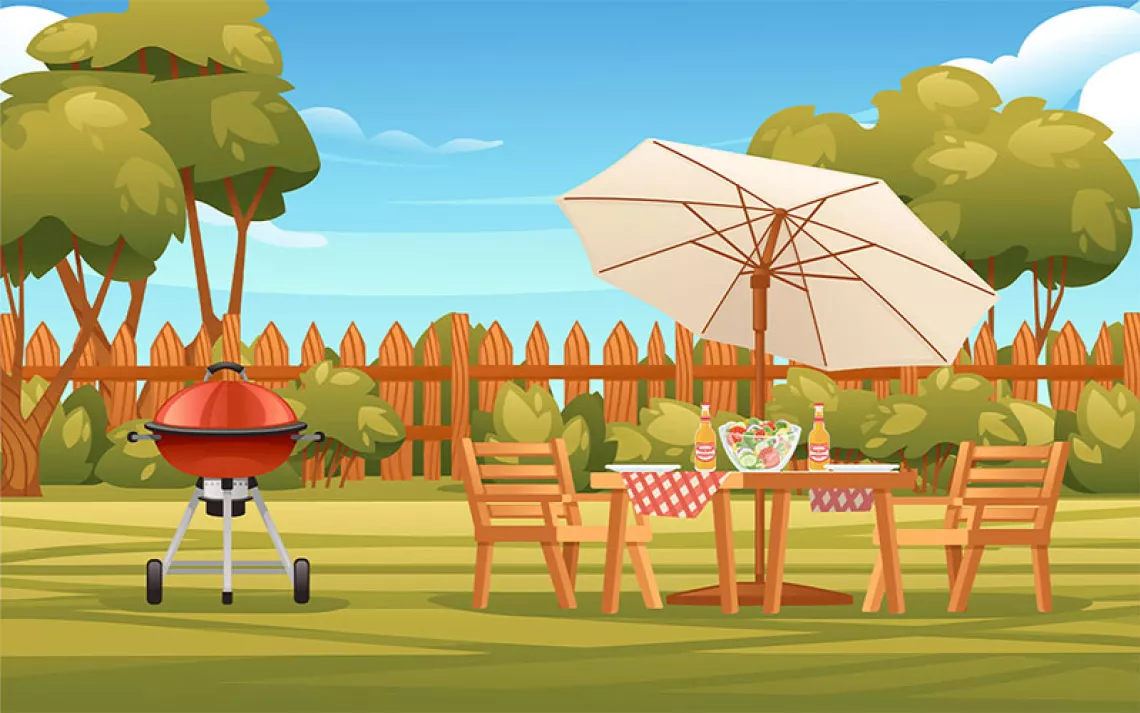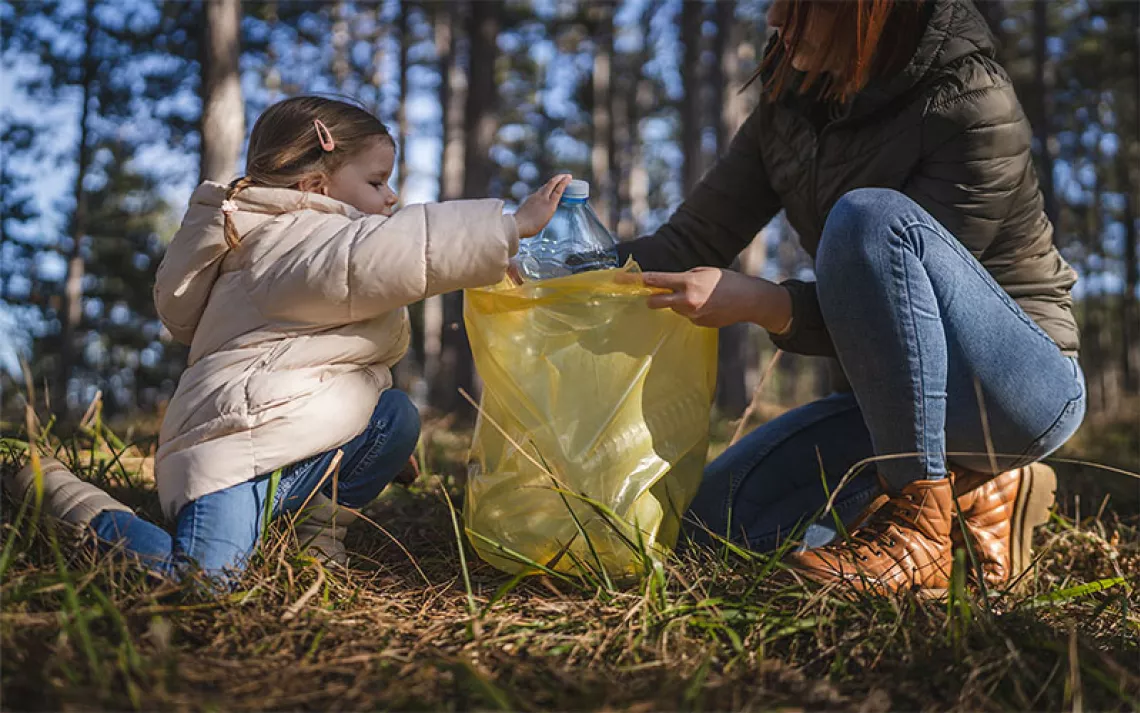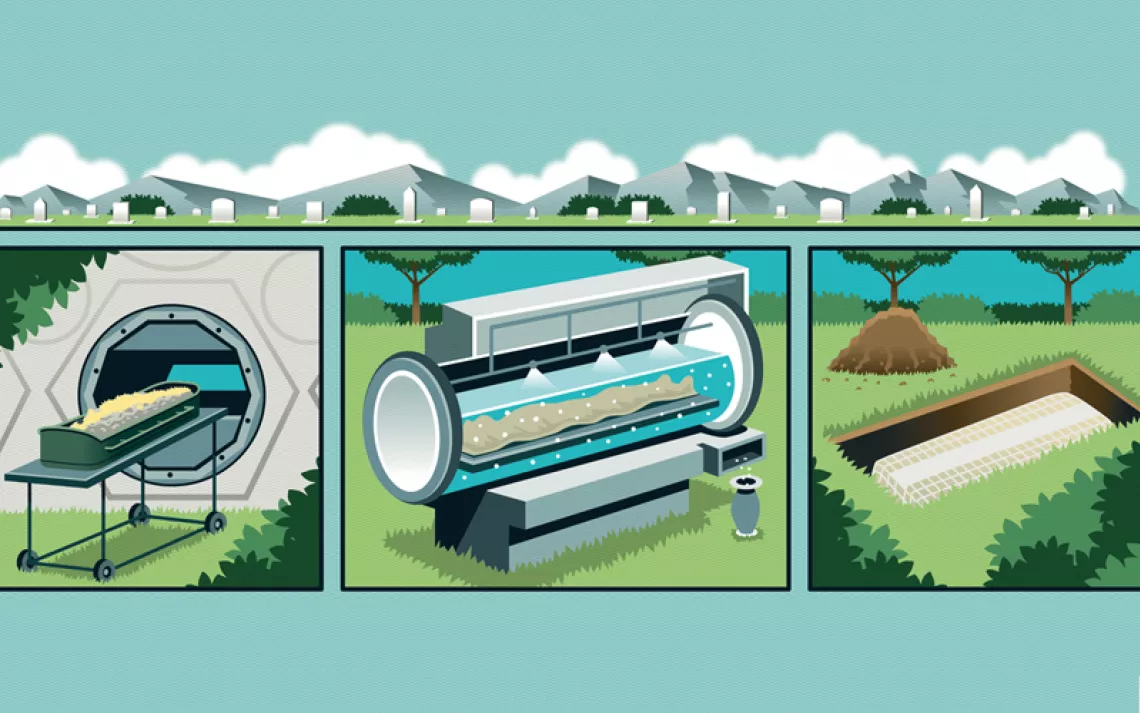Remedial Education: How to Recycle
You're recycling wrong—Mr. Green will show you how

Illustration by Little Friends of Printmaking
Q: Hey Mr. Green! My city has curbside recycling, but I'm confused about what should be recycled and what should not. There are so many different materials, and it's hard to keep track. Can you please clarify?
—Heather in Memphis, Tennessee
A: If it's any consolation, Heather, you're not alone. Nosily poking through recycling bins around town, I've found scads of items—like garden hoses, plastic bags, and shattered glass—that not only are nonrecyclable but also can gum up recycling equipment. I've even seen straight-up toxic waste, including half-filled cans of paint and antifreeze containers.
It's not like there's a shortage of stuff to recycle. Americans continue to throw millions of tons of perfectly good recyclables in the trash, including $1 billion worth of aluminum cans every year—enough to build 36,500 Boeing 747 jumbo jets.
The detritus of modern civilization can be overwhelming. Luckily, when in doubt you can go to earth911.com to find out what's recyclable, what should go in the garbage, what might be donated to a creative reuse center, and what needs to be handled by a specialty recycler or hazardous-waste facility. (Also useful is DePaul University's Beyond the Bin Guide, bit.ly/depaulguide.) Because there is so much variation in recycling practices, you should also contact your local recycler to find out how to best use its services.
One of the greatest variants is whether people separate materials themselves or use what's known as "single-stream recycling," wherein all types of materials go into a single bin and the recyclers sort everything out. This system raises recycling volumes but can also significantly increase contamination rates, leading to more material dumped in landfills. On the other hand, it opens the door to the possibility of recycling items that other systems can't deal with. In San Francisco, for example, the single-stream recycling service operated by Recology can now accept otherwise hard-to-recycle ephemera like plastic corks, fabric, and even old CDs and plastic flowerpots.
But most recycling operations are much more limited, and popular confusion about what is recyclable and what is not can have serious consequences. Last September, U.S. recyclables contained so much extraneous crud that China—the recipient of much of our recycled material—started rejecting our shipments. The industry responded by improving its sorting equipment. Even so, inappropriate items still mess up the machinery, contaminate otherwise valuable material, and even endanger workers.
Here's what you definitely can and should recycle without fear:
* cardboard
* paper
* magazines
* cereal and other food boxes
* metal food and beverage cans
* plastic jars, jugs, and bottles
* glass bottles and jars, where they are accepted (if your local or curbside recycler doesn't accept glass, look for one that does at earth911.com)
Among universal no-no's:
* aerosol cans that aren't empty
* automotive oil and fluids
* car batteries and auto parts
* scrap metal
* pesticides
* Styrofoam
* diapers
* sanitary products
* pet poop and litter
* disposable razors, ice packs, and gloves
* toothpaste tubes
* shredded, wet, or contaminated paper
Plastic produce and grocery bags (#2 and #4, if you want to get technical) are a big problem because they clog recycling equipment. They can be recycled separately, but only in the bins provided by many retail food stores. Otherwise, they can be reused and then discarded.
Except for beverage bottles and food jars, most kinds of broken or used glass should simply be thrown away. Computer monitors can go to electronic recyclers, while fluorescent and compact fluorescent lightbulbs need to go to a specialty recycler or hazardous-waste facility. (Many hardware stores will accept them as well.)
Pizza boxes should not be recycled unless you excise and throw away all the greasy parts. Only the paper sleeve and plastic lid on takeout coffee cups can be recycled, although some compost facilities will accept the cups. People toss out about 60 billion paper cups a year; better to carry a reusable cup or a thermos. (According to Starbucks, only one out of 20 customers brings a reusable cup, so there's a lot of room for progress.)
Plastic containers are generally acceptable if they have a recycling symbol on the bottom. That includes plastic takeout containers, but you should scrape or rinse out the food scraps. Biodegradable plastic (usually made from corn or potatoes) should not go in the regular recycling bin. It goes in the municipal compost—if you're lucky enough to have it—or can be buried or thrown out in the regular garbage.
Keep in mind that these are general guidelines: Recycling policies differ widely from place to place, which is why your local recycler is the ultimate authority.
This article appeared in the January/February 2018 edition with the headline, "Hey Mr. Green! What, Exactly, Can I Recycle?" It has been corrected.
 The Magazine of The Sierra Club
The Magazine of The Sierra Club



